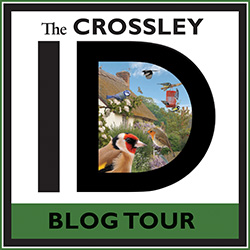Welcome to The Drunkbirder (if you want to know how the name came about check out the about me button). It’s a privilege to be involved in this blog tour to promote The Crossley ID Guide: Britain & Ireland. For the full tour schedule see here.
Like a lot of birders autumn (or fall as our North American friends would say) is probably my favourite time of year. Not for me birds in all their breeding finery, I perversely prefer the challenge of identifying first-winter and adult migrants in all their autumn drabness.
Living in landlocked Leicestershire we have to make a special effort and travel quite a few miles to the coast to try and find ourselves some rare and scarce migrants… or do we? Well generally, yes we do, but we can witness some very special migration events. Recently a few of us have joined the growing ranks of vismiggers. Vismig or the visible migration of birds is nothing new but now more and more birders, conscious of our environmental impact, are staying close to home and turning up some great birds.
The season usually starts towards the end of August and sees the Swifts depart to be followed by Tree Pipits and the Swallows and Martins. As September gives over to October the Meadow Pipit passage picks up and following favourable winds the Thrushes start to move. At first one or two Redwing with numbers slowly building until the big push with birds moving night and day.
Along with the sweet smell of rotting leaves and bonfires the tseep tseep calls of migrating Redwing at night is, for me, the essence of the season. It hints towards the longer, colder nights of winter. This autumn vismiggers around the UK have recorded some spectacular counts with up to 33000 passing a Midlands watch point during a morning. In Leicestershire, we weren’t so lucky but the passage always gets us excited. What else can we pick out moving with the Redwings? Hawfinch seem particularly keen to join the passage but as yet we await one past the Mammoth at Watermead Country Park.
As October moves on and the Redwings set about the local Haws the dominant species passing becomes the Fieldfare. The size of a Mistle Thrush, the Fieldfare with its grey head and rump, chestnut back and boldly spotted underparts really is a real stunner. We tend to get larger movements as November comes in and it usually marks the end of or autumn passage.
As birds of both species settle down to spend the winter with us I always enjoy searching the chattering, restless flocks hoping for something rare. Dusky Thrush would be a dream, Eyebrowed Thrush a gem but more likely would be a Black-throated Thrush. Inland counties in winter do rather well for the latter species. Every Black-throated Thrush I’ve seen has been with a winter thrush flock and all have been in the Midlands. Each would be a much wanted County first.
This brings me back to The Crossley ID Guide: Britain and Ireland. Anyone reading my review will be aware just how highly I rate the Crossley Guide or, as I’m sure it will become known simply, Crossley and Crossley shows off the winter thrushes, Redwing and Fieldfare just as many of us cherish our encounters. Both are shown in the snow on fallen Apples… a surprisingly warming sight!
Why not join Richard Crossley and Dominic Couzenson Thursday 21st November 2013 between 19.00 and 20.00 for a webchat. Check out the details at Shindig.
For tomorrow’s blog see here.








Pingback: Crossley Britain and Ireland Blog Tour Kicks off on Monday! Here’s the complete schedule.
Reblogged this on The Drunkbirder™.